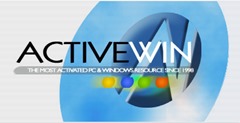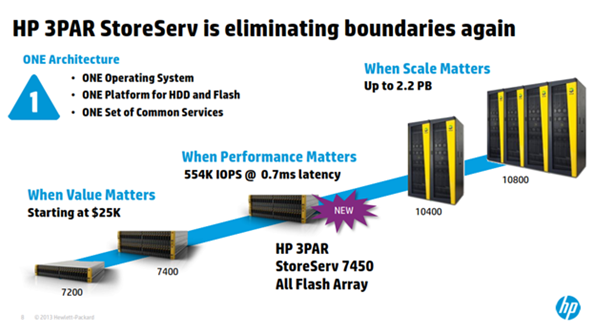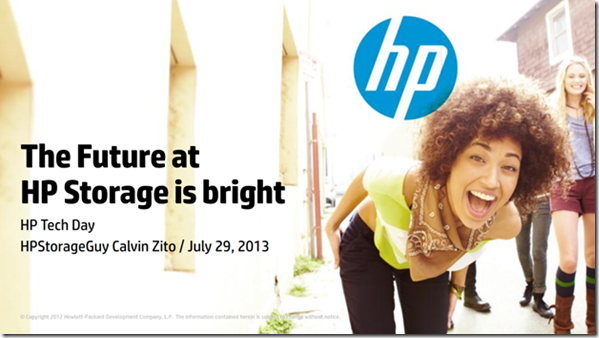The Best Cloud is a Personal Private Cloud

“The other five hundred and eighty-eight million turned into your dark seekers, and then they got hungry and fed on everybody. Everybody! – Neville, “I Am Legend,” Warner Bros., 2007
On a recent trip I gazed out the plane’s window as we flew over the clouds. It reminded me that most pilots fly over, under and around clouds … not in them. Even with all their technology pilots avoid clouds.
The rest of us fly blind.
We dump everything we can in the cloud because it’s either cheap or free—in spite of the fact that we have plenty of local, safe storage:
-
-
Smartphone – 16 - 32GB
-
iPad – 32 - 64GB
-
Ultrabook – 128GB SSD or 500+GB HD
-
Heck, some of the newest smartphones are being offered with a whopping 128GB of storage, but storage seems to be the one thing we can never get enough of.
Even though most studies show we use our go-anywhere, do-anything devices at home--where we probably have plenty of portable and server storage, people still want more capacity … just in case.
Volume Growth
Extra storage is needed because for some reason your content just grows and grows:
-
Your music library is constantly expanding
-
You keep adding more digital books you really want to read
-
There are TV shows and movies you missed and you’re going to watch as soon as you get the time
-
There are personal/family photos
-
You grab volumes of company/client/market research
-
New gotta-have games, apps keep getting introduced

Home Content – With more than 3 B Internet users, smartphone sales surpassing 2B and 300+M tablet users, it’s little wonder that the volume of content in the home continues to steadily grow. The challenge is to store, use and share it easily, safely.
A byte here, a byte there, it all adds up. That’s why storage is such a neat industry – flash is fast but expensive, HDs are big and cheap. In the right combination … life is good.
And then there’s the big fluffy cloud that will hold everything for you. It’s not only free or cheap, it’s versatile. You can go there to share stuff, post great work, save things for tomorrow.
Cloudy Understanding
As much as people talk about and use the cloud, we were surprised by a recent study by Gartner that concluded most folks don’t really understand what the cloud is or how often they use it.
Respondents said it was related to weather, pillows, drugs, toilet paper (?).
Many Millennials believed that stormy weather could interfere with cloud services.
Even though a lot said they didn’t use it now, everyone said they would use it … someday.
It Is What it Is – Every company worth its salt has a cloud public, private, hybrid storage service. Even MS’s departing boss Steve Ballmer gets excited when he talks about the beauty, the marvel of his company’s offering. It’s just really a big thing.
Even people who sell you cloud services have a tough time telling you exactly what it is, how it works, where it exists.
Neville warned, “You can't go running into the dark.”
Cloud sales people usually end up saying it’s big, it’s good, it works.
The truth is, if you’re online you’re using the cloud for online shopping, research, banking, social media (Facebook, Twitter, Pinterest, LinkedIn), streaming video and file sharing. The cloud is used to send email, print from mobile devices, exchange medical information, and store stuff … lots of stuff. People who use it every day may not be able to define the cloud, but they certainly know how to use it. Without the cloud you wouldn’t be able to do anything or would be dramatically limited in your day-to-day communications, activities.

Can’t Share Enough – Give 3B plus people a global service, fast/economic devices, platforms to express themselves and watch the data, images, video, stuff roll in every minute of the day.
Tell someone they can’t access YouTube, post to Facebook or use any of “their” online storage, retrieval services and they’ll tell you it’s their God-given right!
Grounded Cloud
All of that storage in the cloud is disk drives – hundreds, thousands of drives–and they sit in data centers … somewhere.
Our unquenchable desire to create, communicate and share is driving cloud storage growth with end-user expectations of anything, anytime, anywhere.

Grounded Clouds – People talk about cloud storage and look up at what’s passing overhead, but that content has to sit somewhere. To keep up with the growing storage requirements, firms are building bigger and bigger data centers around the globe.
To support all that digital activity, there are now more than three million data centers of widely varying sizes worldwide, according to IDC. More are being built every day.
People want their content on any device, without complications, restrictions. The public/personal clouds have become popular places to store files, pictures, notes, content.
Despite their shortcomings and issues, according to IHS, cloud storage services like Dropbox and Google Drive will double their subscription base from 625 million this year to 1.3 billion in 2017.
Stuff Happens
I use the word services only “lightly.”
I know sites will be out of service for a few minutes, few hours or even a few days because of hardware, software or human malfunctions. And it’s always at the worst possible time … for you.
Like Neville said, “It's just... I was saving that bacon!”
The services have also been known to lose data, and that’s tough. They apologize (sometimes) but still, you probably didn’t read your user agreement; did you!

Bad Guys/Gals Tools – Hackers and cyberthieves have gotten really creative and really good at being able to attack and harvest useful, profitable information from the cloud (of course so has social media). As good and as fast as security products are, they are still always one step behind those who want to do physical or fiscal harm with your data.
The thing that makes us shy away from their services is the fact that they’re big, juicy targets for hackers, whackers, cyberthieves. Penetration and theft happens so often it isn’t even news any more.
Your Problem
All the cloud folks offer some protection but according to Trend Micro, cloud providers still say security is the customers’ responsibility.
That’s a big challenge for most of us.
You’re probably “a little irritated” because of the National Security Agency (NSA’s) activities, but every country has laws that allow government agencies free access to data in the cloud. Even with tougher privacy laws than the U.S. has in place, other countries have anti-terrorism laws–cloud data/information access–that make the U.S.’s Patriot Act feel almost cuddly. Government snooping is creepy, but online theft is just plain wrong and impossible to predict/protect against until after it happens.
Of course the Web 2.0 firms that tap all your info and sell it aren’t real cool either. The GM of HP’s enterprise security products said even companies with well-trained security people will be victimized by data theft/loss.
"It's going to happen," he said. "It's inevitable."
At this year’s computer security conference, John Chambers, chairman of Cisco, said the cloud is a “security nightmare” that “can’t be handled in traditional ways.” That makes me feel really confident about storing my stuff in the cloud, John! And it gives new meaning to Neville’s observation, “Social de-evolution appears complete. Typical human behavior is now entirely absent.” Added to that is the hassle of keeping files in sync that are on my tablet, ultrabook and office/home server.
Remote Options
Rather that keep really important personal and business information in the cloud, products like TeamViewer are really great for working from almost anywhere over the iNet on files, materials on my home/office systems.
It works pretty well.
Of course, when you’re across country or overseas, there’s a terrific lag in response between the two systems. Sending stuff to my remote device is fairly easy--as long as I remember to update the files in both locations. Prestaging files in Dropbox or Google Drive and moving them back and forth is a nuisance and it turns out hackers and low-lifes love to hang out in big clouds that have tons of stuff they can dig through. The best way around the problem is a VPN (virtual private network) that many companies deploy. They set up their private network across the Internet so they can send, receive and share information safely and securely.
Personal VPN
It may not be “IT grade” but a good solution I’ve found for our family’s devices and information is NTI’s MiST that was recently introduced.

Personal VPN – Not as robust as a corporate-grade Virtual Private Network (VPN), NTI’s MiST provides individuals, families and even small businesses the same ability of safely, quickly move files and content between the full range of home, office and personal devices to minimize the possibility of data corruption or theft.
We’ve loaded it on all of our devices – smartphones, tablets, ultrabooks, home server.
The kids like it because they can take photos/shoot videos with their smartphones and automatically load them on our home computer over our personal, secured file-sharing network. There’s no need to stop at the public photo/video site they use to use.
I’ve found it great for accessing files, presentations on my server and moving them back and forth when I’m working remotely. The great thing is that the files automatically sync between the two devices so the one I look at is always current. It saves me the hassle of thinking ahead – which seldom happens – to load files and stuff on my neat 1TB WD passport drive. For about what Pandora costs me to stream music to my devices, I can still access/use the material located on our family’s new WD 4TB home cloud.
I agree with Neville, “This is Ground Zero. This is my site.”
If I was really paranoid–O.K. smart–I’d encrypt the files that I send and receive (encryption really ticks off government agencies); but I just don’t think hackers/cyberthieves are that interested in locating my lowly family storage unit when there are big fluffy, juicy clouds out there.

I just avoid the public cloud as much as possible because I’m not as heroic as Neville when he said, “I can help. I can save you. I can save everybody.”
G. Andy Marken is founder and president of Marken Communications


















